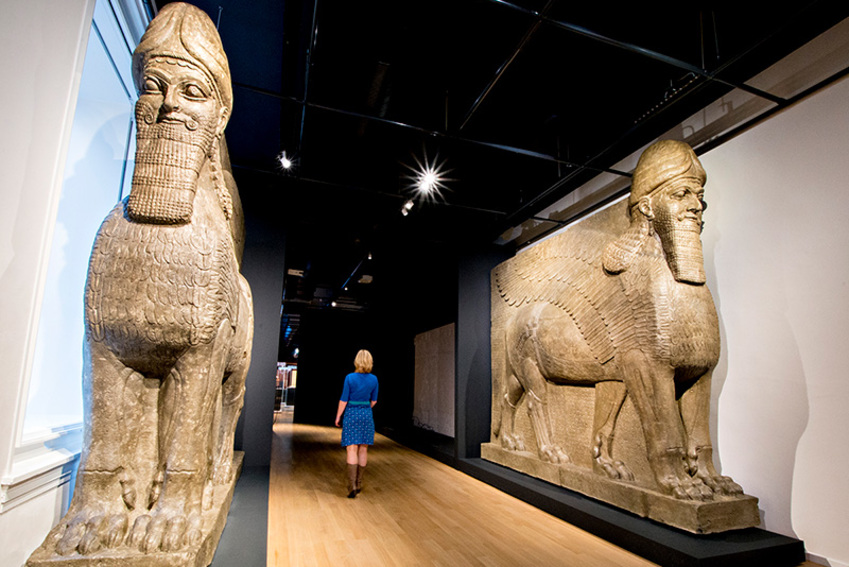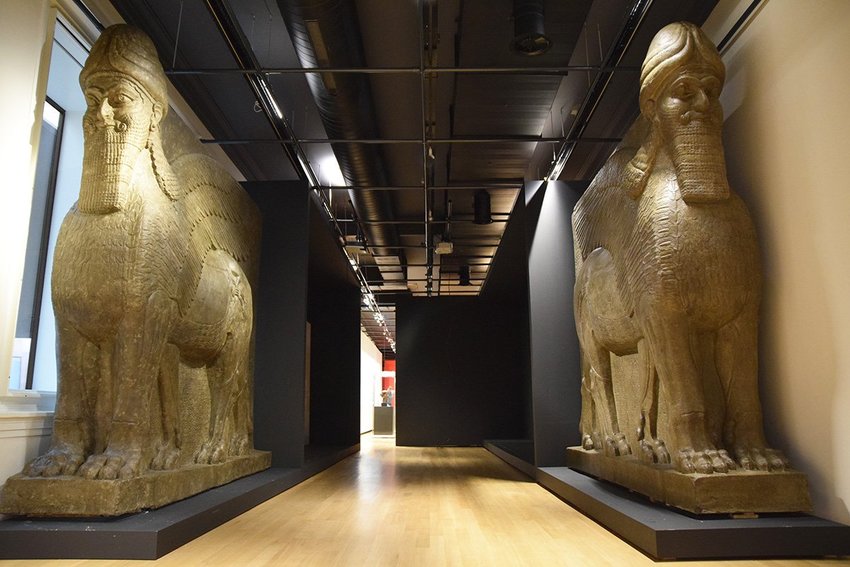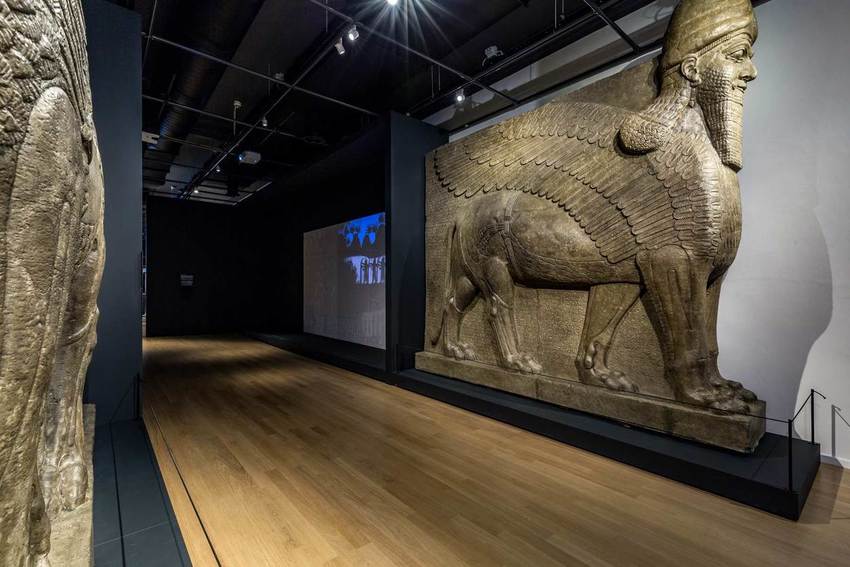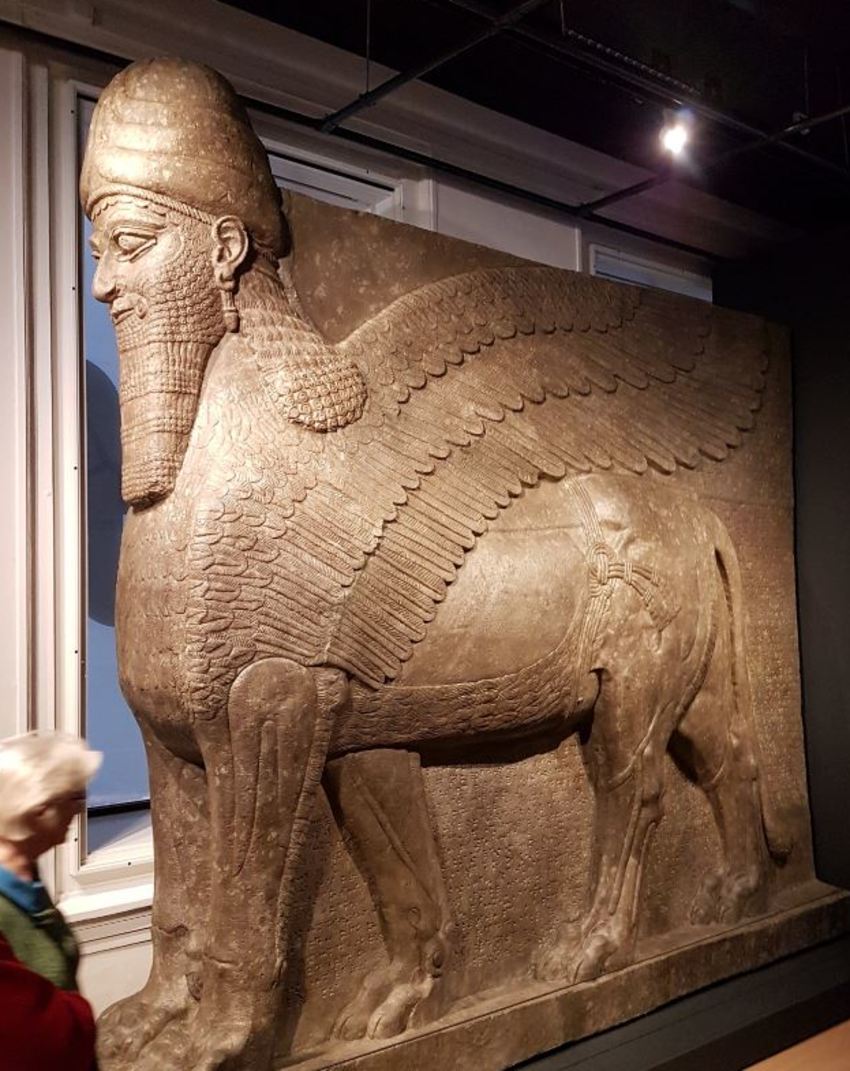
Factum Foundation created the facsimiles for the exhibition Nineveh
These statues of winged lions with five legs from the North-West Palace of Ashurnasirpal II were often placed at gateways to ancient Mesopotamian palaces for protection. In addition to the Lamassu, reliefs play a leading role in the exhibition: Virtually every palace wall was covered with picture stories carved in stone. It is estimated that Nineveh contained over fifteen kilometres of wall reliefs. The panels depict historical and fictional stories, starring the king as the heroic protagonist.

In 612 BC Nineveh was razed to the ground by the Babylonians and other enemies of the Assyrian Empire. The ruins were scarcely inhabited in the centuries following this devastation. The nearby city of Mosul took over the role of key regional centre, and Nineveh sank into oblivion. It endured in legends passed down in works by classical authors and the Scriptures, but even the city’s former location was a mystery until the 19th century.





